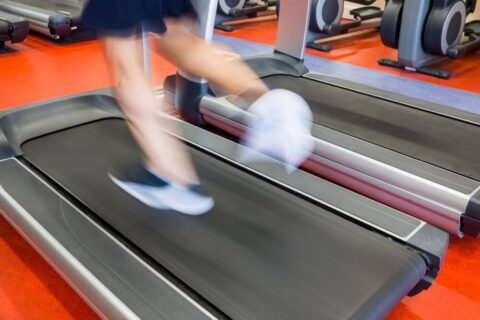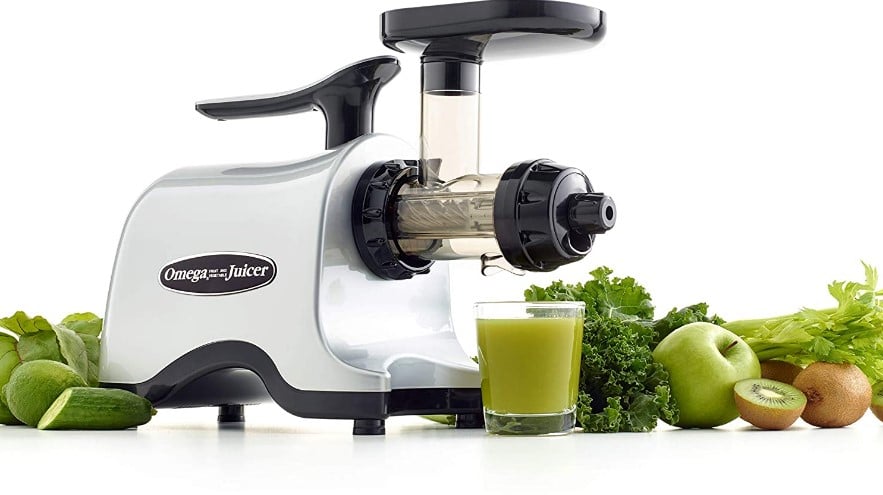Generally speaking there are two types of juicers: centrifugal and masticating. While these both juice vegetables, fruit and wheatgrass, their methods vary considerably and people often enquire the difference between Masticating and Centrifugal Juicers!
With a masticating juicer, you’ll get higher quality juice. A centrifugal juicer crushes ingredients through spinning blades and a mesh filter basket, while a masticating juicer slowly grinds ingredients between gears that crush them gradually while they’re being squeezed.
Contents
What is a Centrifugal Juicer?
The first type of juicer that I’m going to discuss is a centrifugal one. As its name suggests, it spins at very high speeds, which help chop up your fruits or veggies into smaller bits so that they can then be squeezed out through a strainer. While these machines do tend to operate at very high speeds, they don’t operate as fast as you may think. They usually spin at extremely high speeds of around 15,000 to 20,000 RPMs (revolutions per minute).

Centrifugal Juicer – How it Works
A centrifugal juicer operates at an extremely high speed of around 15,000 rpm. It’s called a centrifugal juicer because the pulp is ejected outwards as it spins. The blades don’t go all the way through so you’ll get plenty of foam and some seeds will be left in your juice.
Pros of a Centrifugal Juicer
- Centrifugal juicers are relatively inexpensive.
- Central placement of the spout is an advantage for easier pouring. Some models have a reverse function to help clear it out if you get something too large in there.
- They also tend to be light and easy to handle. No messy clean-up since just rinse off the strainer.
- Juicing is fast, and there’s no pre-cutting of ingredients needed.
- High yield is achieved, with a lower cost per glass of juice.
Cons of a Centrifugal Juicer
- Juice made from this kind of juicer has a short shelf life since it contains more oxygen and other gases that can cause the growth of bacteria.
- The juice you get from a centrifugal juicer can be low in nutrients, so the amount of juice per pulp is relatively small.
- You’ll lose out on some beneficial enzymes because they’re killed off as the ingredients are forced through at such a high speed.
- Cleaning and maintenance can be difficult because the mesh basket gets clogged with pulp and fruit seeds that are left behind.
What is a Masticating Juicer?
A masticating juicer is a type of slow juicer that operates at about 80 rpm. A normal centrifugal juicer spins the produce at 15,000 rpm to separate juice from fiber; masticating juicers use two interlocking gears to position produce over a single auger (spout) which chews and squeezes it.
It’s important to note, however, that the auger always spins with these juicers – hence why they’re also called cold-press or continuous pressure machines . This means there’s no need for the friction heating typically associated with high-speed juicers. As such, less nutrients, taste and aroma are lost in the process than in the case of fast spinning centrifugal juicers.

Masticating Juicer – How it Works
The masticating juicer squeezes the fruit into tiny bits to extract the juice. While this may sound time consuming, a good slow juicing machine can process more than one glass per minute! You won’t have any trouble with bitter tastes or foam, and you’ll feel refreshed rather than tired after drinking it.
Pros of a Masticating Juicer
- The juice extracted from the masticating juicer is much healthier since it preserves more of the enzymes and nutrients.
- There’s no foaming or clogging since the machine operates slowly. Juice will also have a longer shelf life.
- The juice you get from this kind of juicer has minimal oxidation due to minimal exposure to air in the extracting process, so it stays fresher for longer. Ideal if you want to make multiple juices, or store some for later use.
- Less foam and less waste means a lower price per glass of juice.
- You’ll feel refreshed after drinking your beverage instead of tired because there are more nutrients in it. The entire fruit can be processed through this type of juicer, including rinds (check out our recommended juicer here Best Cold Press Juicers for 2021 – Trusted Brands, Buying Guide and FAQs).
Cons of a Masticating Juicer
- They cost more to buy initially, but they can last a lifetime. They also take up less space than centrifugal juicers.
- Masticating juicers are slower so you have to wait longer for your juice. This might be an issue if you don’t have the time in the morning!
Centrifugal Vs Masticating
If you want to juice for health reasons, go for a masticating juicer. The slow speed is ideal for preserving the freshness and nutrients of your ingredients. You’ll also be able to leave out seeds and peelings if you like (again check this site if you are looking for a recommended slow juicer).
On the other hand, if ease of use or time-saving is important to you, then get a centrifugal juicer. It’s easier to clean since it doesn’t require much work pre-cutting the produce into tiny pieces. The pulp is also more dry as the fibers have been compacted into tight balls rather than left on the fiber plate, which means less wastage.
It also has a much higher juice yield, so you’ll spend less time juicing and more time drinking your fresh squeezed drink! The pulp will be wetter though, so it’s not ideal if you’re looking to make a large batch of juice or store some for later use.
For these reasons, centrifugal juicers are best if you need to produce high volumes of juice quickly (for example commercial juicing). They’re also great if you’ve got a busy lifestyle as they’re faster than slow/masticating juicers.
Which type do you prefer? Feel free to leave us a comment below!
We’re always happy to help or answer any questions you might have. If you’ve enjoyed reading this article, please share it with your friends or anyone that can benefit from the information provided.
Final Words
It’s important to note that no matter what type of juicer you choose, fresh juice is always better than bottled, and it tastes much better too. Just remember that high-quality ingredients make delicious juices. To get the most nutrition from fruit and vegetables, eat them raw whenever possible. But even with a lower quality source of produce, there are still great benefits to be had.
Hope this article answers your question of ‘What is the Difference between Masticating and Centrifugal Juicers?’



















